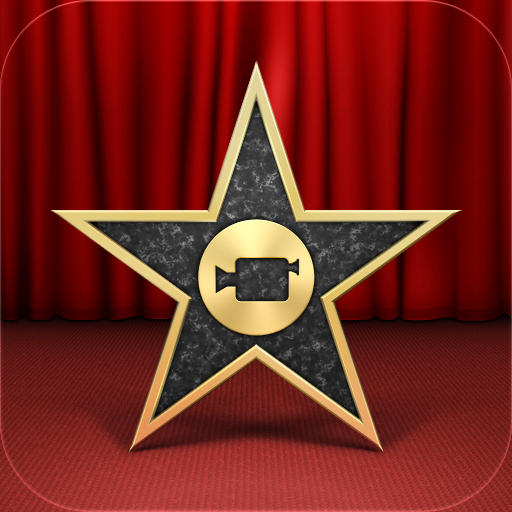
The After Show Morsels: FaceTime On 3G, iOS 4.3 Compatibility, New Apple iOS Apps, And More
March 5, 2011
Apple's March media event is over and the big bangs have silenced. In the commotion of snapping hundreds of photos and creating highlight reels, some things can go unnoticed. We'd like to take a moment and acknowledge those requirements, capabilities, and limitations that were buried and pushed aside this past week.
FaceTime on 3G: No, Apple hasn't changed their requirements for the live chat service, but a new feature can help you bypass the limitation. Originally introduced to Verizon fans with the release of the CDMA iPhone, Apple's new Personal Hotspot creates a limited user Wi-Fi router out of your iPhone 4. The release of iOS 4.3 next Friday will expand this capability to many other cellular providers.
FaceTime's requirement of a Wi-Fi connection only appears to be skin deep -- meaning it only checks for the device's connection type. If you enable Personal Hotspot, or also known as AT&T Mobile Hotspot, you can successfully establish a FaceTime connection by using a 4G iPod touch, iPad 2, or second iPhone 4 connected to the hosting iPhone 4. It has been speculated for some time now but Cult of Mac seems to have confirmed it using the iOS 4.3 GM.
How significant is this? Like most other abilities, it depends on the user. For example, those future owners of both an iPad 2 and iPhone 4 could now chat on the go without needing to look for a Wi-Fi connection. Of course, there are a few footnotes. A person would need two FaceTime-capable devices -- or a friend with one, relevant data (Data Pro for AT&T) and Personal Hotspot plans, and the will power to restrain themselves from using it too much and creating a lot of data overage charges. Hopefully, we'll be able to do some in-depth testing for quality and bandwidth details in the coming couple of weeks.
iOS 4.3 Compatibility: It was already noted that the iPhone 3G is no longer supported. That isn't exactly surprising considering 3G users were left behind regarding many of iOS 4's features already. The more interesting exclusion of iOS 4.3 compatibility is the CDMA iPhone 4. Apple specifically notes "iPhone 4 GSM Model" and makes no mention of the CDMA version or iPhone 4 in general.
The iOS version included on the CDMA handsets (4.2.6) is already equipped with features like the Personal Hotspot, however, it doesn't include the AirPlay enhancements, Nitro JavaScript engine for iOS Safari, and iTunes Home Sharing for iOS that were announced Wednesday. What's the hold up? More importantly, how long will it be? Those are valid concerns and likely aren't making Verizon iPhone customers too happy.
iPad 2 Cameras and Microphone: Obviously, it's now very real that the second generation iPad includes two cameras. As with the fourth generation iPod touch, these cameras are included primarily for FaceTime and video capture activities. Why? Both camera sensors have decent to good video performance but poor still image capabilities.
The 4G iPod touch front camera is VGA quality (640 x 480) for both video and photos and the rear camera capable of 720p (1280 x 720) video but only 960 x 720 still images. The reduction to 960 seems to be due to ratio constraints, where video is full widescreen but photos are limited to the boxier dimension. This isn't an absolute -- yet, although, Apple not listing any still photo quality on the iPad 2 specifications page would suggest it isn't something to brag about.
It isn't something to do cartwheels over, however, it does seem that Apple continues to improve upon at least some of the little things. Apple has moved the iPad's mic from the left side -- near the headphone jack -- to the middle of the top section. This change is likely due to the two new cameras, where Apple wants both to be as viable for FaceTime as possible. As Mac Rumors also points out, this indeed explains the unidentified opening at the top of the iPad cases spread around amongst the earlier rumors.
iMovie and GarageBand: The new universal iMovie will only be compatible with the iPhone 4, fourth generation iPod touch, and iPad 2, as explicitly stated on Apple's iMovie on iPad page. The GarageBand on iPad page has no mention of specific requirements as of yet. A few sources, including a tweet by Danny Patterson (@Coupler), claim confirmation that the new mobile iLife app does indeed operate on the original iPad.
Apple's Digital AV Adapter: Despite Apple not stating it openly in the media event this week, the new HDMI output adapter is compatible with iPhone 4, fourth generation iPod touch, iPad, and iPad 2. The iPad 2 is the only device that offers full unrestricted mirroring and 1080p output. The other three devices are restricted to 720p output and require an app to have video out abilities.
I'd like to end this with a speculative comment. The Digital AV Adapter is compatible but has certain restrictions on Apple's A4-based iDevices. Video mirroring is most likely an artificial limitation but the 1080p capability is probably only possible using the dual-core A5 in the iPad 2.
This brings me back to iMovie. The upcoming version of iMovie is compatible with everything but the original iPad. That would mean it is obviously able to run on the A4. So, what's holding the original iPad back? It could be another artificial limitation, but I have another theory. Even though iFixit assumed the 4G iPod touch only has 256MB of RAM -- based on the CPU identifier numbers -- perhaps they're mistaken. The iPhone 4 has 512MB of RAM and it's 99.999% likely that the iPad 2 has at least 512MB of RAM, therefore, one could conclude that 512MB of RAM is the requirement. It really doesn't matter either way, just something to ponder about.
[Image credit Engadget]


